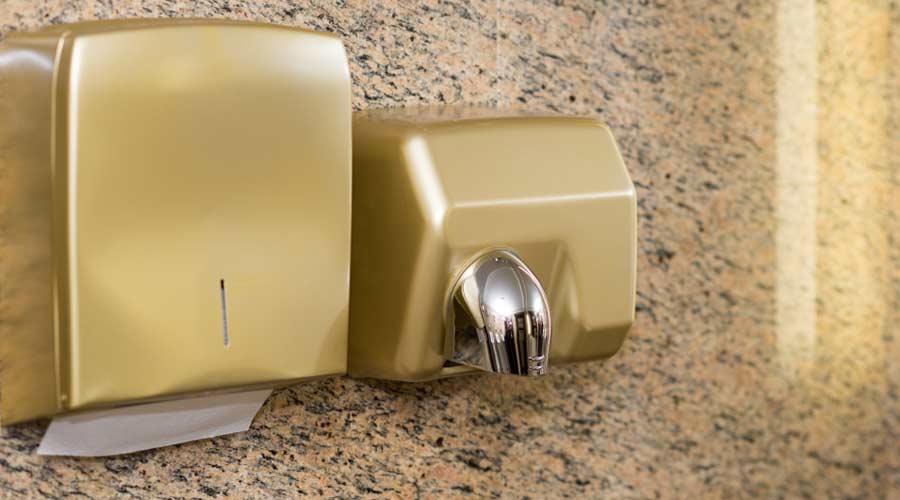
There is clear evidence that Europeans have changed their hand hygiene habits since the COVID-19 pandemic: washing their hands more frequently throughout the day and plumping for paper towels as the most hygienic way to dry hands when out and about.
Now, a new mask study provides scientific data to support these preferences. It seems that, as is so often the case, the consumer knows best.
The research found that contamination of hand dryer users by splattering was 10 times higher when using jet air dryers than when using paper towels, and contamination of other washroom users was also significantly greater.
The findings have major implications for hygiene in public washrooms. Hand drying is an essential step in ensuring optimal hand hygiene, helping to remove microbes remaining on hands following poor handwashing and so reducing the spread of infection in the community.
The study was carried out by a team at the Leeds Institute of Medical Research of the University of Leeds, UK & the Department of Microbiology of Leeds Teaching Hospitals NHS Trust, UK. Participants dried their hands using either a jet air dryer or paper towels and wore face masks as a way of measuring the risk of inhaling viruses.
· When using jet air dryers, 89 percent of masks were contaminated by viruses — compared with 29 percent of masks when using paper towels.
· Facemask contamination with virus aerosols was higher in the first 5 minutes following hand drying for both methods. Virus load was significantly higher with jet air dryer use.
· In trials using jet air dryers, facemask contamination increased at 15 minutes post-hand drying, suggesting aerosolization of small particles that remain airborne for longer.
The study demonstrates that the method of hand drying has the potential to impact airborne dissemination of microbial pathogens — including respiratory viruses — so potentially increasing risk of exposure and infection for other washroom users. Armed with this new research, restaurant and bar owners and procurement managers responsible for facilities in large sporting and shopping complexes, would be wise to review the hand drying equipment they offer and be sure to provide customers with the most hygienic option: paper towels.
More details about the results of the study, can be found here.
Study Methodology
A bacteriophage (a type of virus) was added to volunteers’ hands before they dried them in order to investigate whether microbes on poorly washed hands can spread across the washroom. The contamination of masks by splattering and droplet deposition was investigated for up to 15 minutes afterwards.
Contamination of the facemask of the person drying their hands and on the mask of another individual in the washroom at 1 meter and 2 meter distance, was measured. Volunteers waited for 15 minutes post-hand drying to examine whether air droplets continued to settle on fresh masks that were changed every 5 minutes.

 The Down and Dirty on Cleaning in Virus Season
The Down and Dirty on Cleaning in Virus Season How Surfactant Use is Expanding in Commercial Cleaning
How Surfactant Use is Expanding in Commercial Cleaning Clean Buildings Conference
Clean Buildings Conference